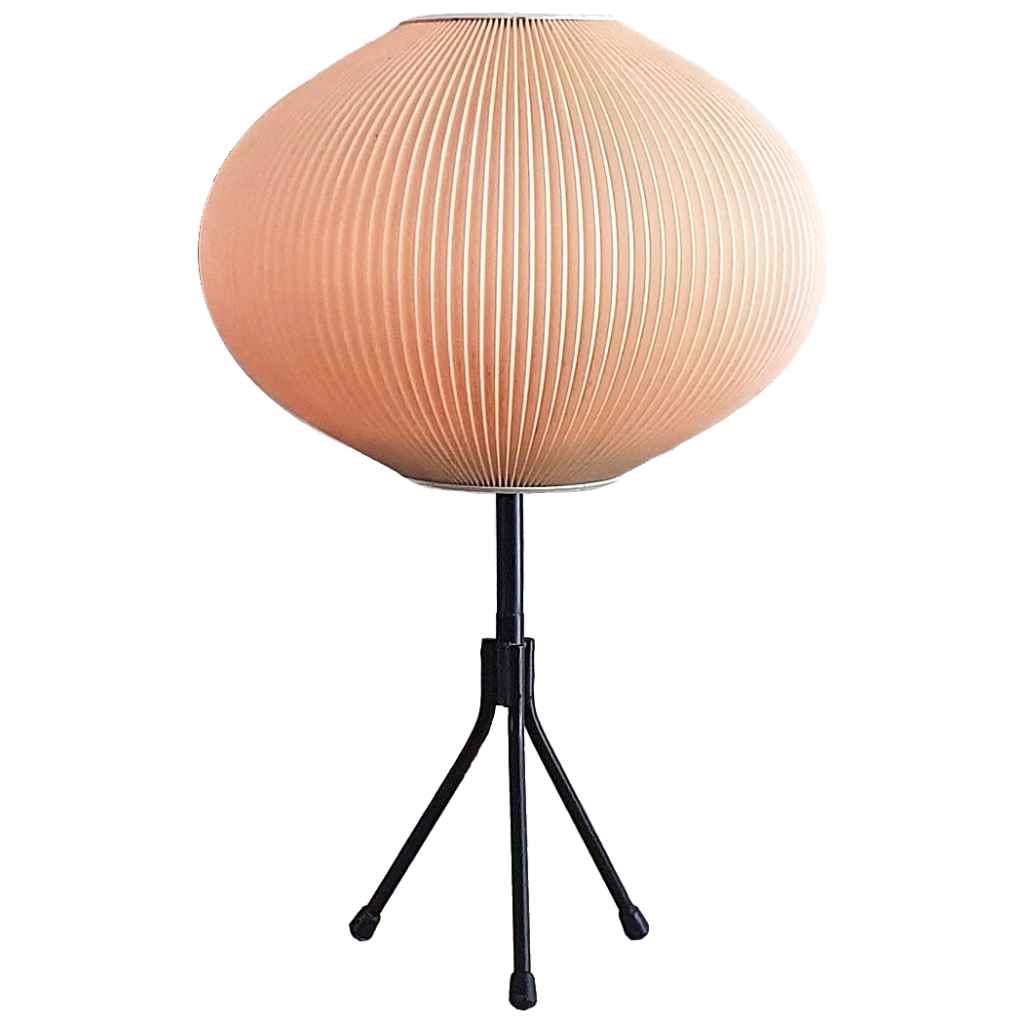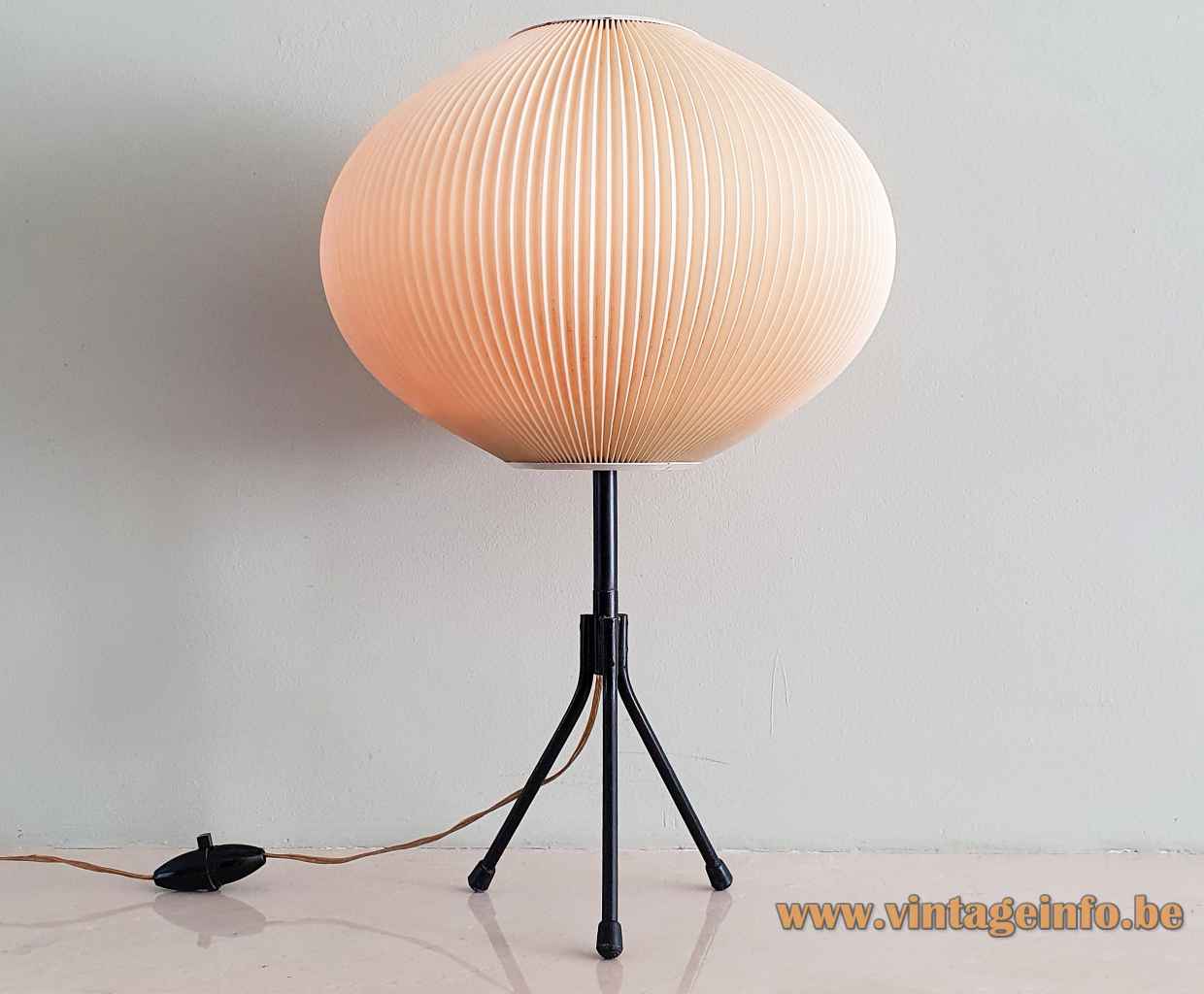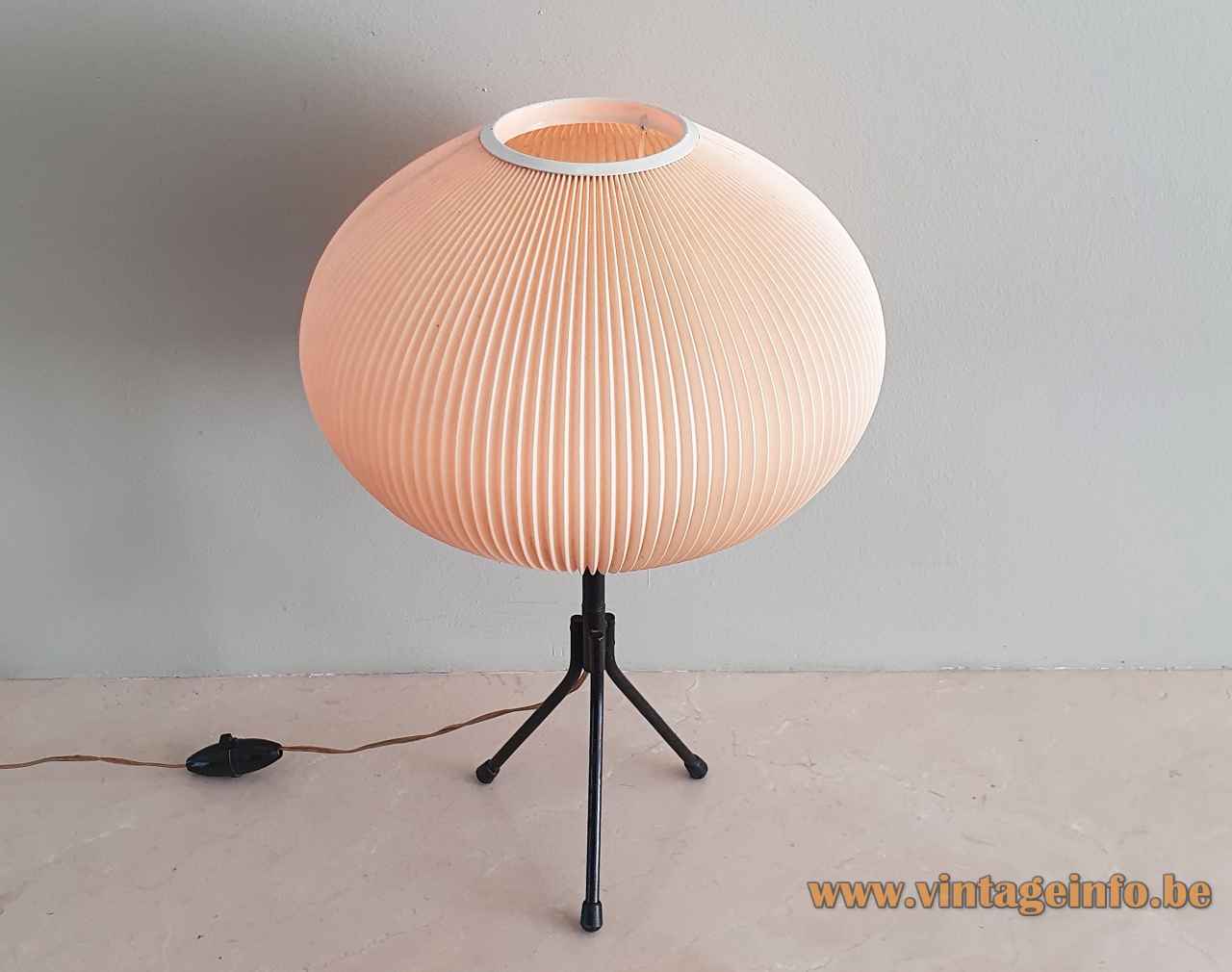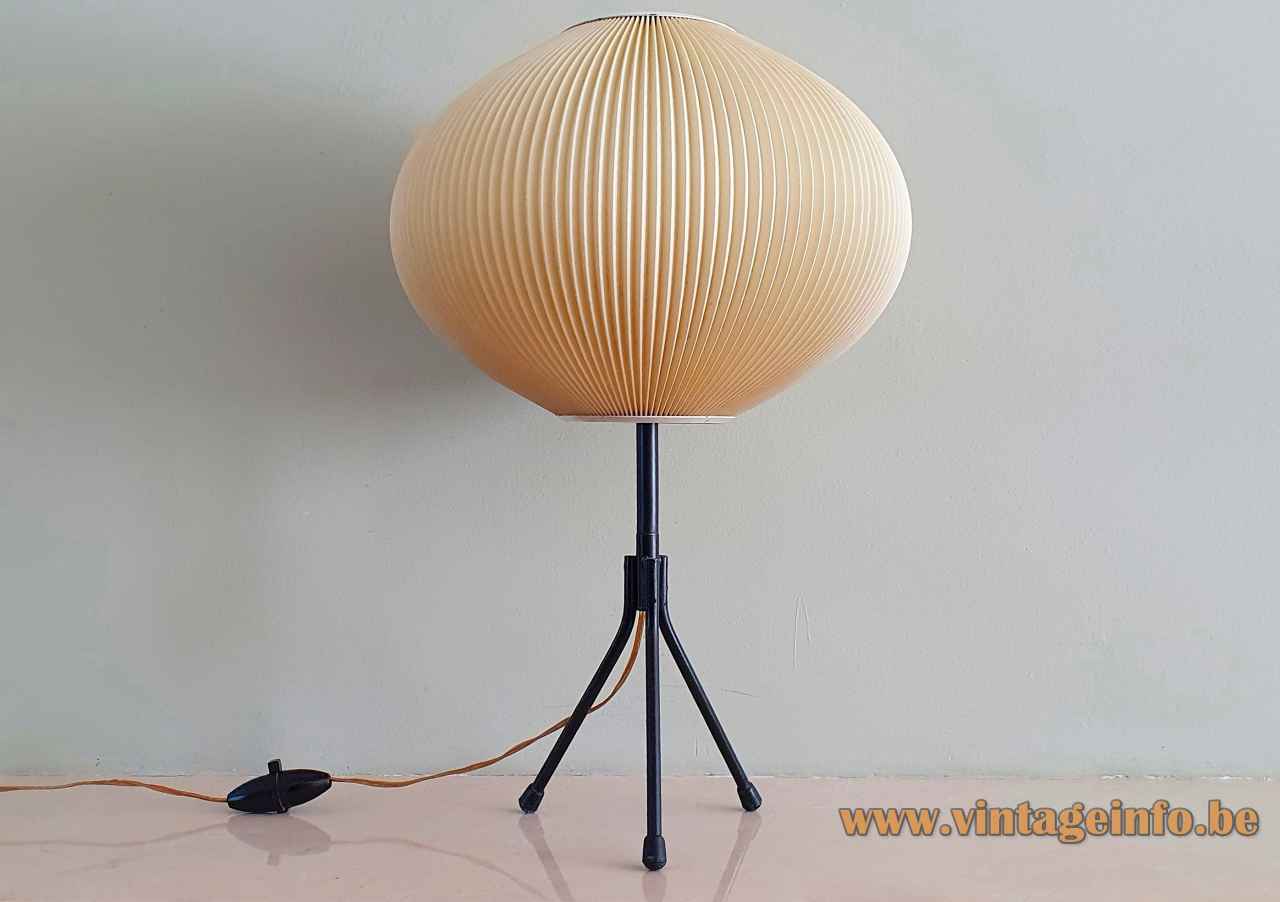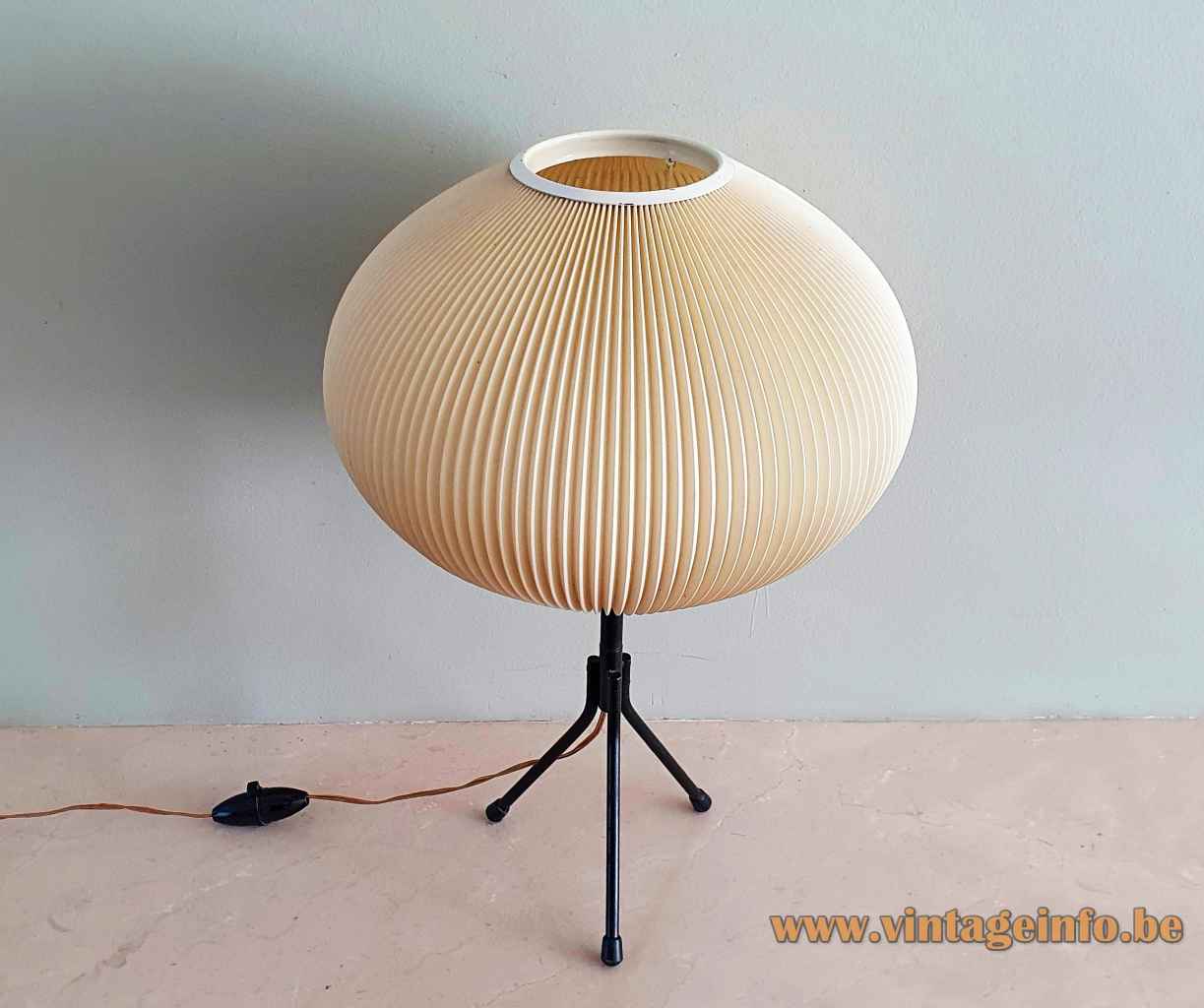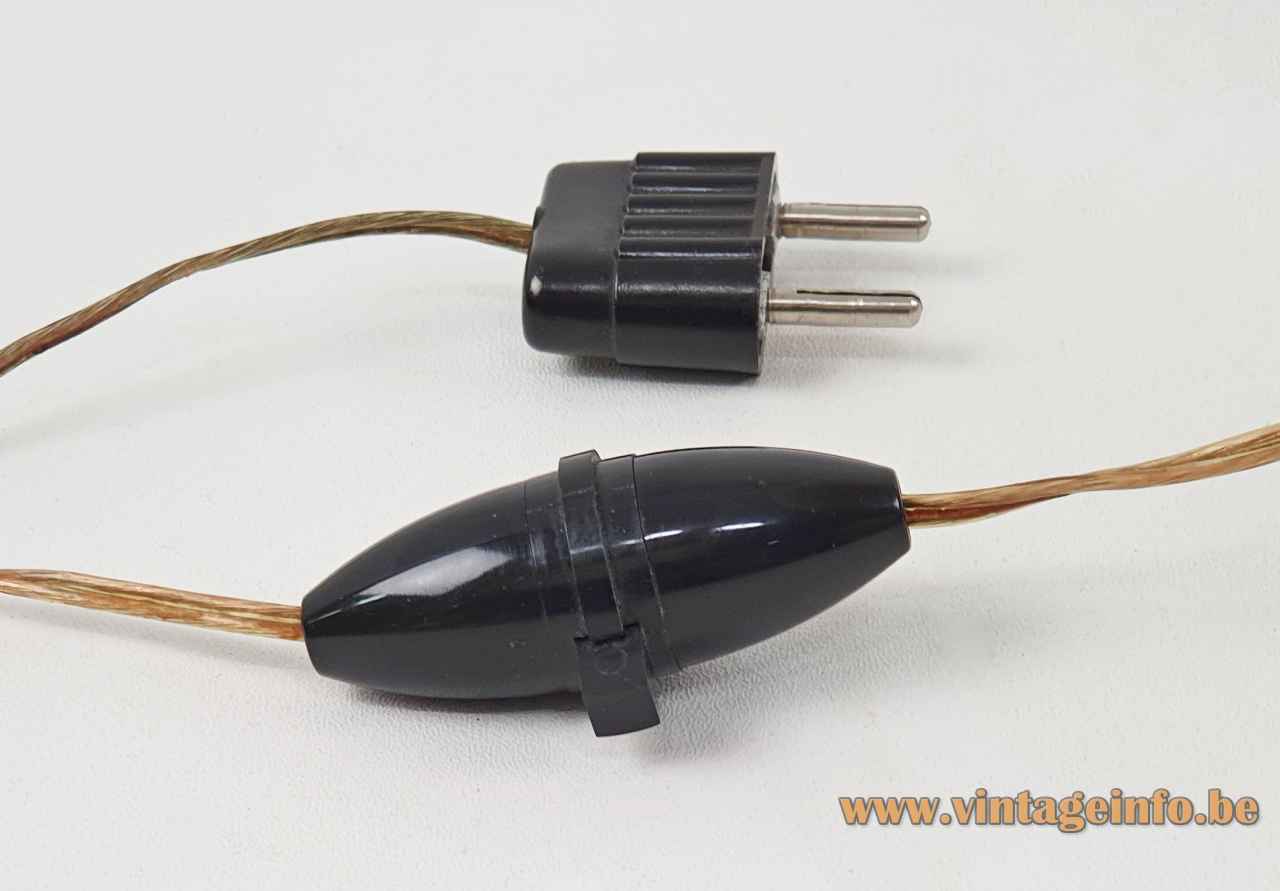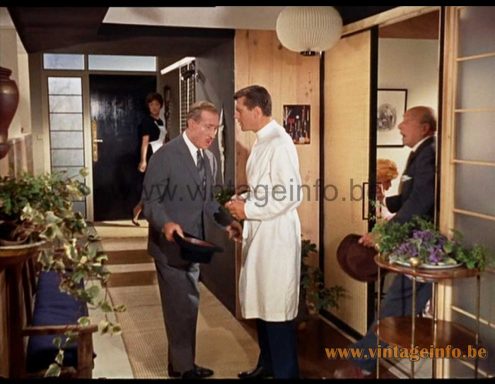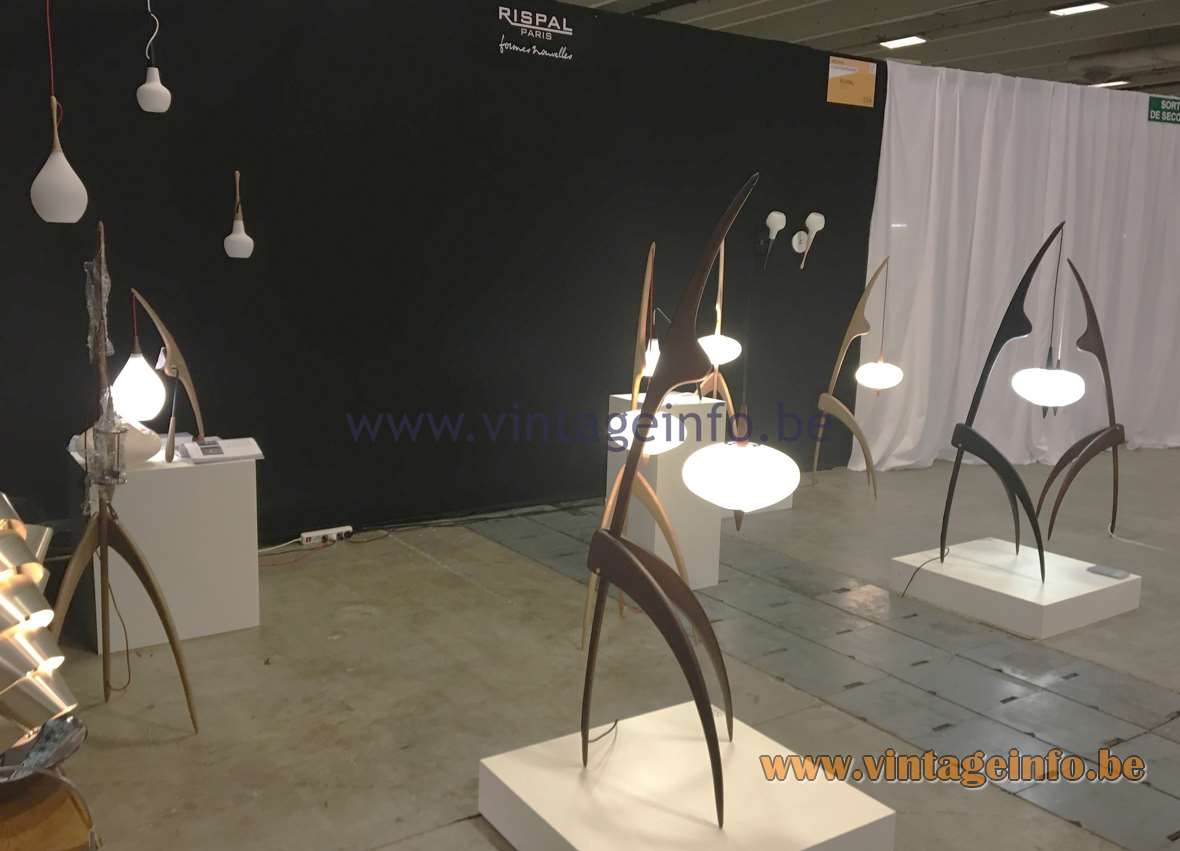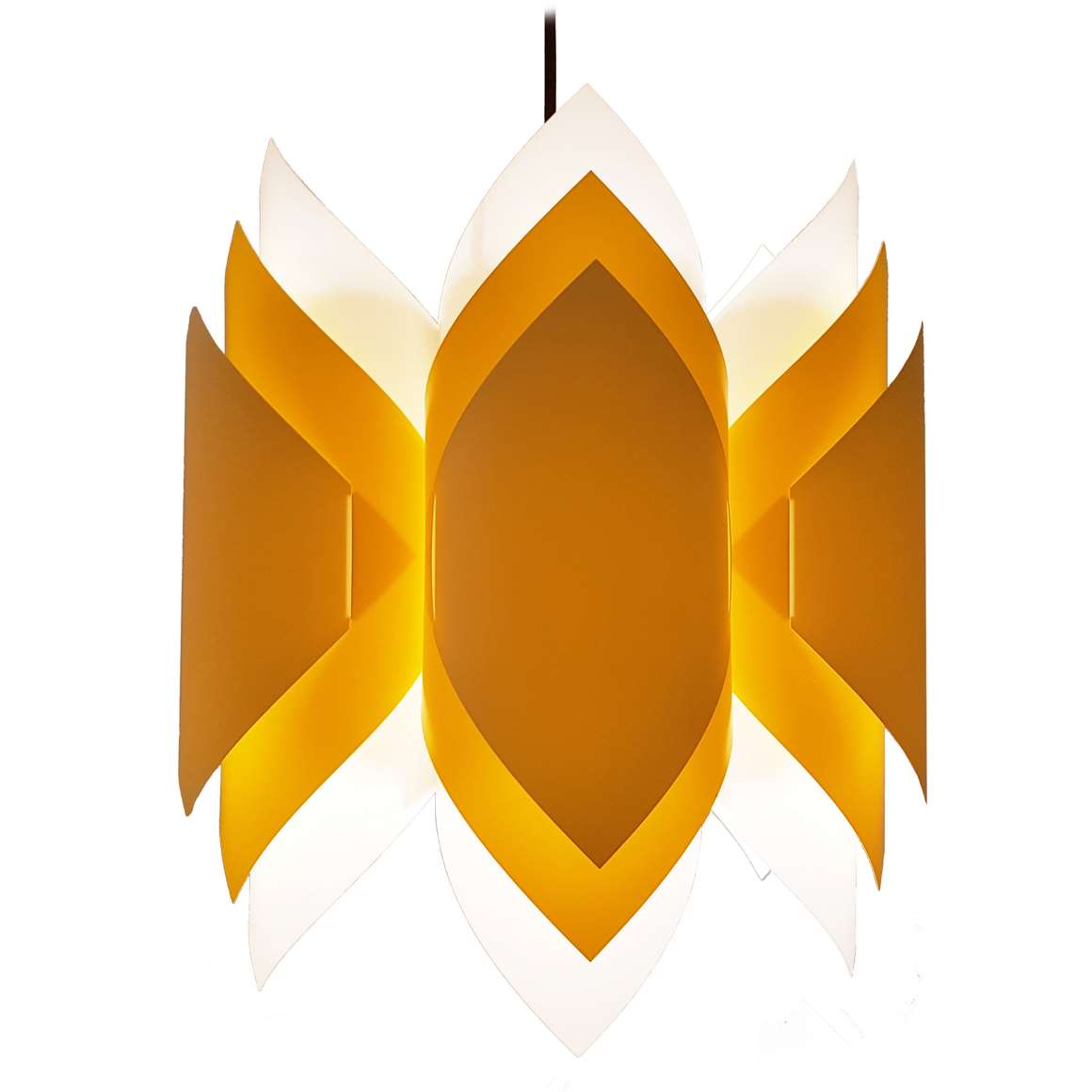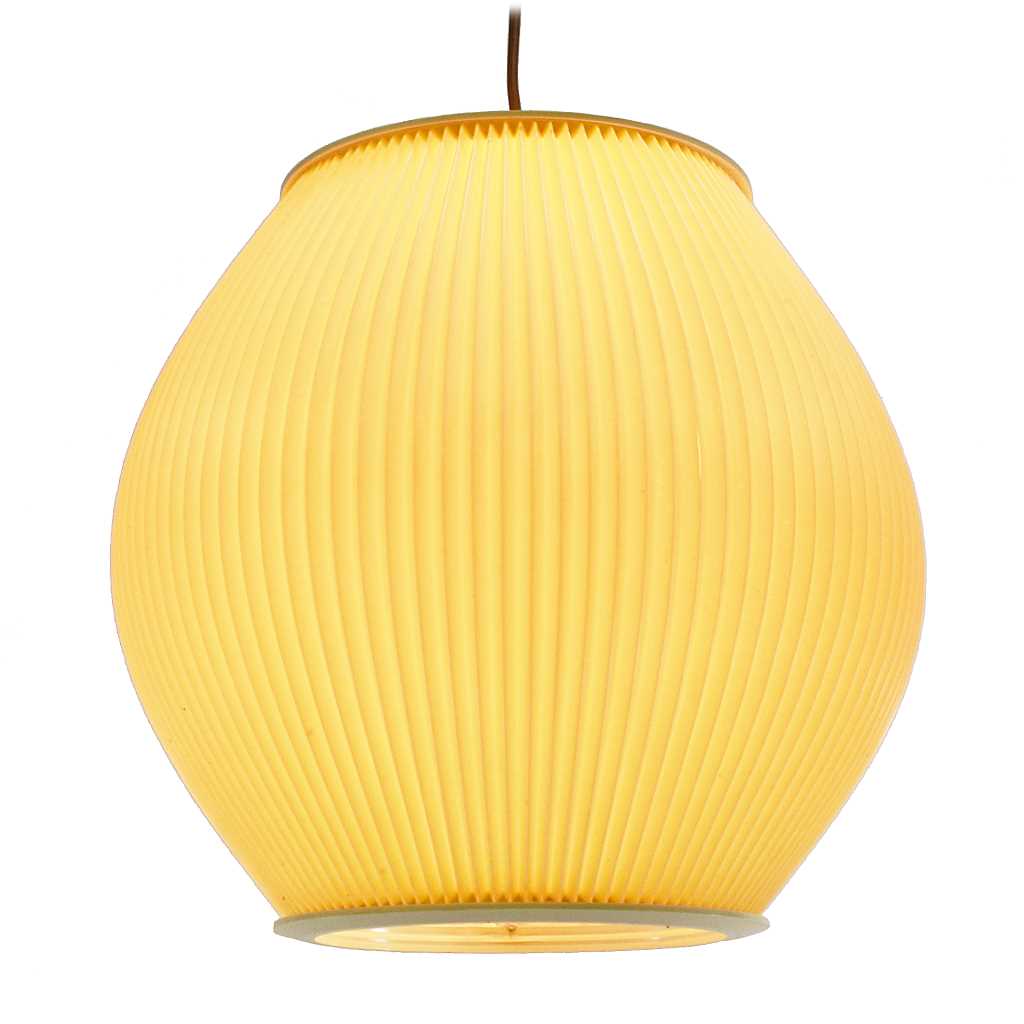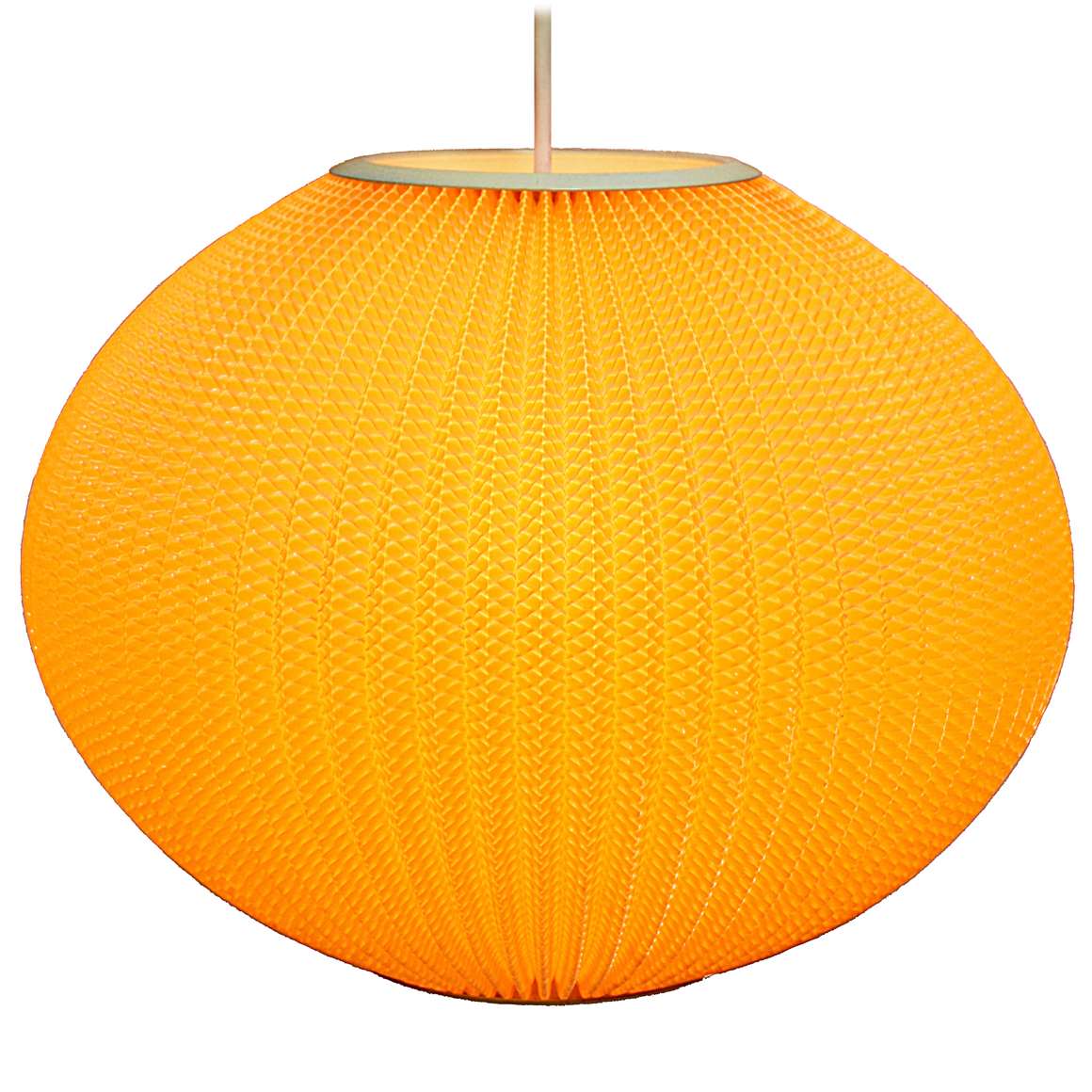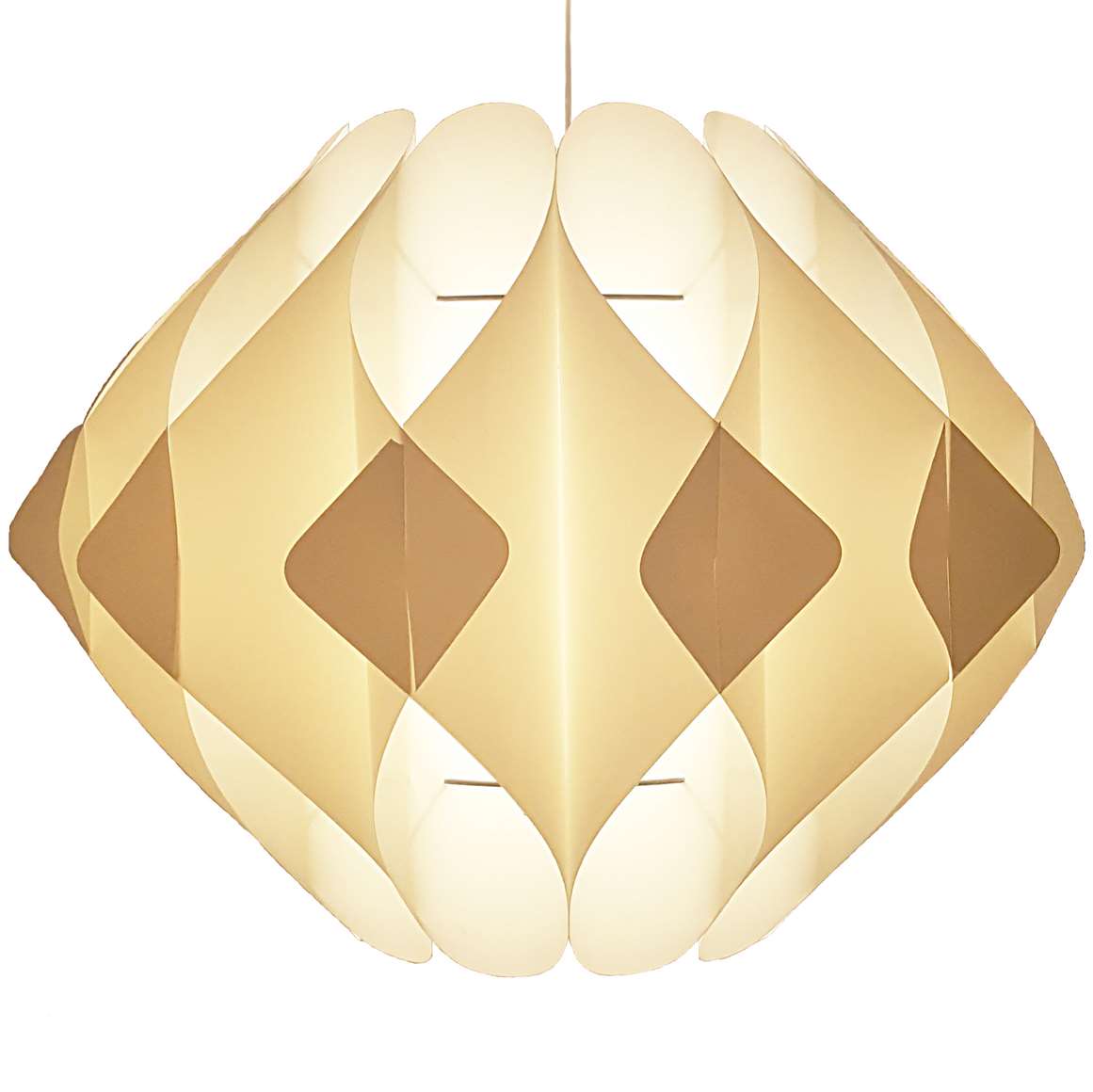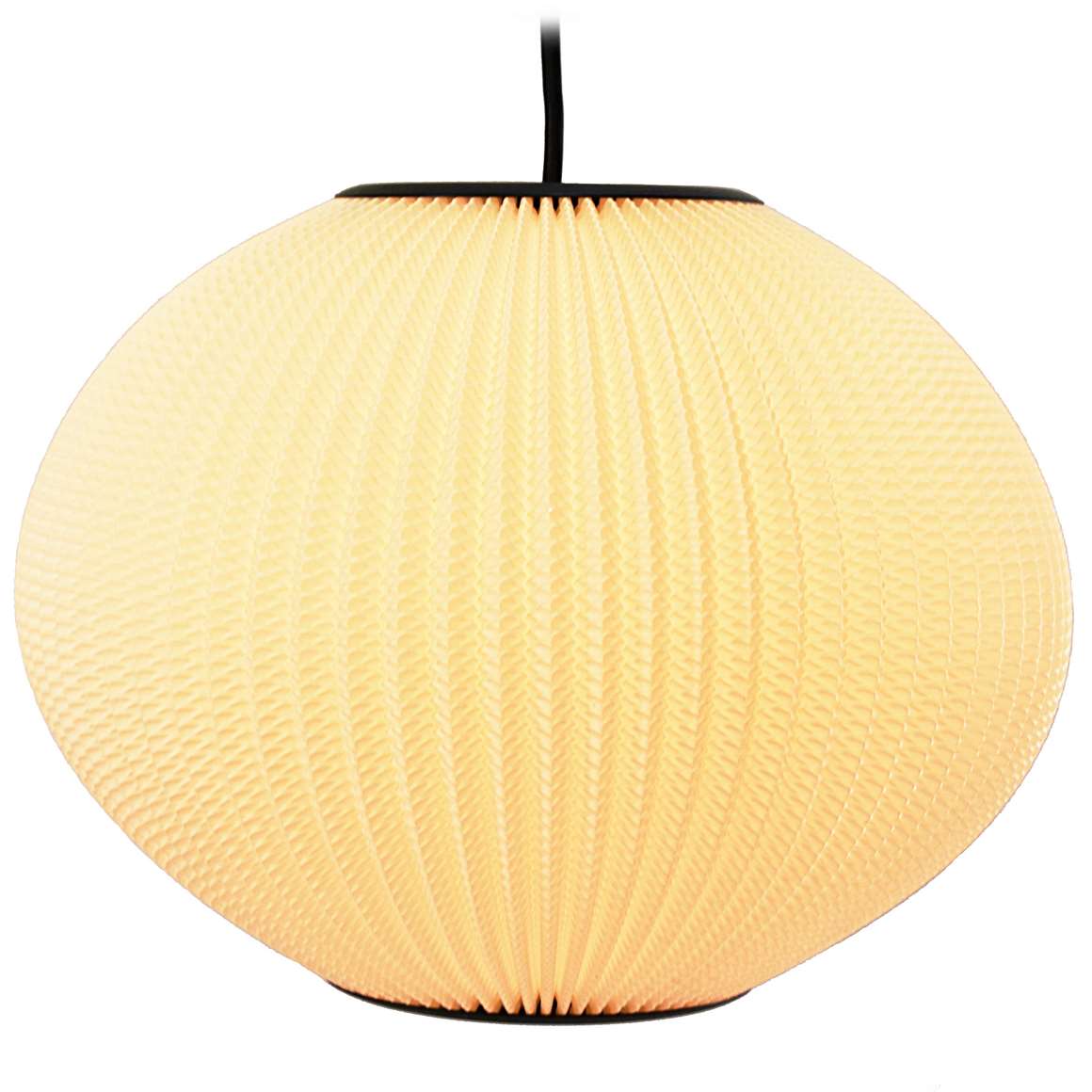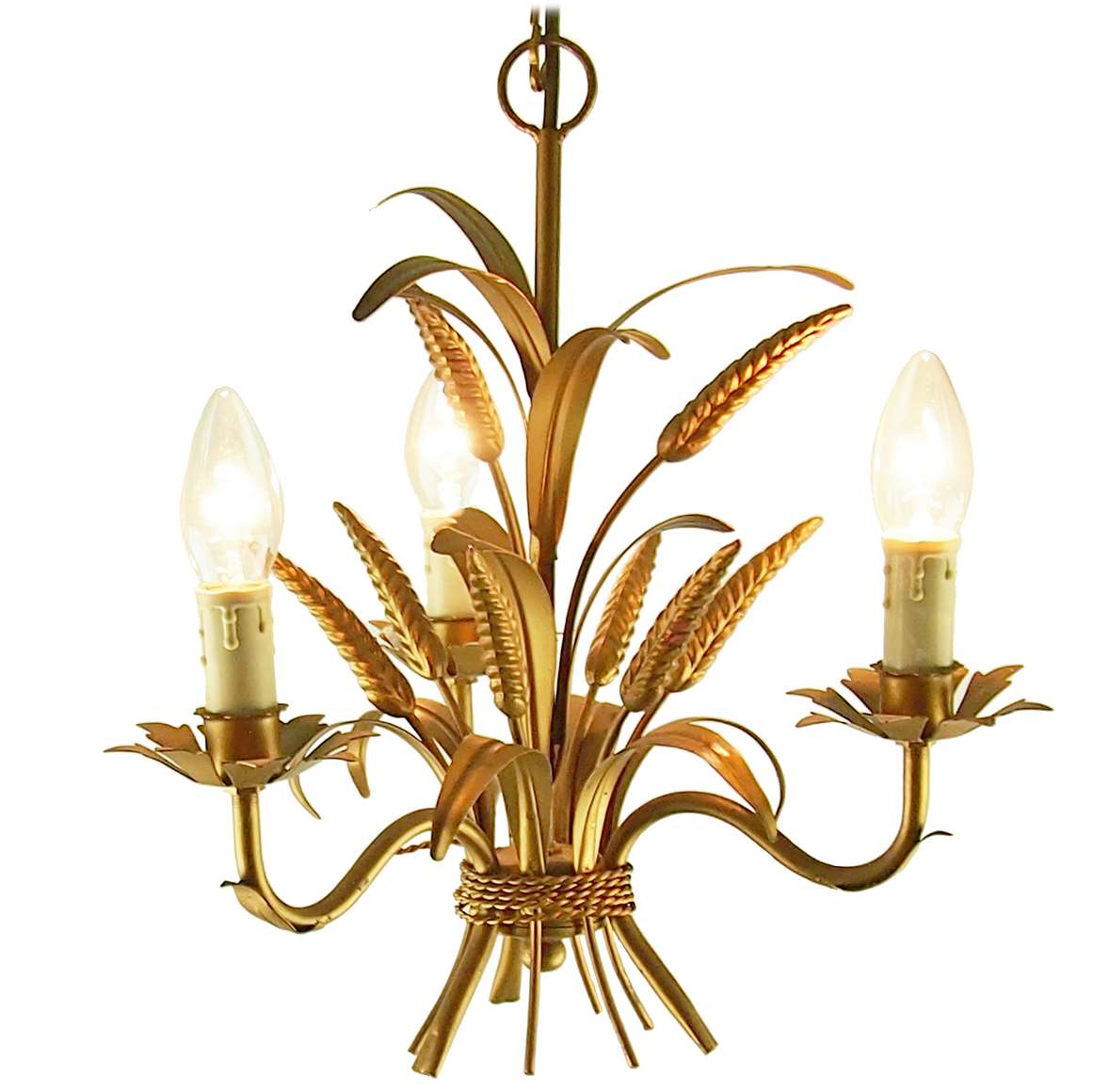Lamps In The Movies
A Pearlshade style pendant lamp, maker unknown, appears in the 1959French-Italian drama film Voulez-vous danser avec moi? English title: Come Dance with Me. Starring Brigitte Bardot, Henri Vidal and Dawn Addams. The lamp has some similarities with a pendant lamp from the Hoyrup series Bojan.
Praying mantis floor lamps on the Les Puces du Design fair in Paris, France in April 2018.
Many thanks to Ger for the beautiful pictures.
Many thanks to Uffe Schiøler for the enlightening information.
Pearlshade Tripod Table Lamp
Materials: Black metal tripod base. Black rubber caps. Ribbed plastic globe lampshade, made of some early light yellow folded/ribbed cuff plastic, probably cellulose acetate (Rhodoid). Some metal and plastic parts. Bakelite B22 socket.
Height: 42 cm / 16.53”
Width: ∅ 28 cm / 11.02”
Electricity: 1bulbB22, 1 x 60 watt maximum, 110/220 volt.
Anytypeof light bulbcanbeused, not a specific one preferred.
Period: 1960s – Mid-Century Modern.
Designer: Made after a design by Lars Eiler Schiøler (1913-1982).
Manufacturer: Zicoli Leuchten Zimmermann + CO. GmbH, Heidersbacher Strasse 2, 09212 Limbach, Germany.
Other versions: This Pearlshade tripod table lamp exists in many variations.
Although it looks very similar to the Pearlshade lamps of the Danish Hoyrup, it is not.
The top part of the Hoyrup lamps was always slightly larger and rounder than the bottom part. In the beginning these lamps were also produced with a wire-frame. The fragile plastic was produced by the German company Dynamit Nobel from Troisdorf.
Zicoli Limbach
The Zicoli Leuchten Zimmermann + CO. GmbH was founded in 1921 in Limbach, Germany. It ended business in 2006. The website was located at Zicoli.de.
Despite the text on their website, Zicoli also sold many lamps produced by others. Almost all the lighting found online was made in the 1970s and 1980s by Massive, Glashütte Limburg and several others. Later in time it is lighting produced in China by anonymous manufacturers, as many companies do.
Hoyrup
The Hoyrup company was founded in Christianshavn, Copenhagen, Denmark by Preben Johan Høyrup in the late 40s. In 1968Lars Eiler Schiøler became minority shareholder. Lars Schiøler designed almost the complete collection from the 50s until the 70s for the company.
Hoyrup created a wide range of stylish modern Danish lights, that were easily-assembled and therefore easy to ship around the world to more than 40 countries. In 1978 the company was split and sold, it became HoyrupLight. It ended business in the mid 80s. The famous lamps are copied by many companies.
Other Hoyrup designers: Carsten Erik Schiøler, Uffe Gustav Schiøler.
Rispal
These pendant lamps are often attributed to the Rispal company from Paris, France. Also Rispal sold similar lamps. They are mostly used to restore the famous “mante-religieuse” praying mantis floor lamp designed and made by Georges Rispal in 1950 and in production since 1952. These shades are very often damaged or lost. These lamps were produced with several different lampshades.
Georges Léon Rispal (1901 -?) was a French lamp designer. He is famous for his original creations and biomorphic forms. He founded his company Rispal in 1924. It was located in 172, Rue de Charonne, Paris, France.
Both designer and producer, Georges Léon Rispal is a designer out of category. His creations have entered the history of international design, including its “mante-religieuse” praying mantis floor lamp today considered one of the finest creations of French luminaries from the 50s.
The original name of the praying mantis lamp is a number: 14. The name was made up by a dealer because of the resemblance with the locust.
Many other companies produced this folded design from around 1955. It was 3 years after the first praying mantis lamp was sold. First editions of lamp number 14 have a “classic” lampshade.
Douglas Mont
In 2014 the business was reactivated and some of the famous designs are are back in production. The company is located in 69, Passage de Choiseul, 75002 Paris. The president is Douglas Mont. He is a designer and sculptor and designed biomorphic light and lighting furniture, as you can see on his website.
The “manchette” or “cuff” plastic is stretchable thanks to the folds, and therefore fits perfectly on the frame. Almost the same kind of plastic has been used for years to decorate flower pots and it is still available today.
The precursor of this cuff plastic was made of the very flammable celluloid or cellulose acetate (Rhodoïd). It was often used for lamps in the 1930s, 40s and 50s. Rhodoïd is a French and English trade name. Other names used for cellulose acetate: Tenite, Zyl, Zylonite, Cellon. Acrylic (1930s) and PVC (1920s) were discovered before World War II, but was only widely used since the late 1950s.
Links (external links open in a new window)
History of the Hoyrup company on their website
Similar pendant lamp in the 1960s catalogue on the Hoyrup website
Similar pendant lamp in the 1970s catalogue on the Hoyrup website
Voulez-vous danser avec moi? – Wikipedia
Voulez-vous danser avec moi? – IMDb
Vintageinfo – Lamps in this style
Orange Pearlshade style pendant lamp
White Pearlshade style pendant lamp
Oval globe Pearlshade style pendant lamp
Another Pearlshade style pendant lamp
Italian 1950s ‘Rhodoïd’ Floor Lamp
